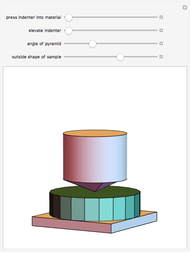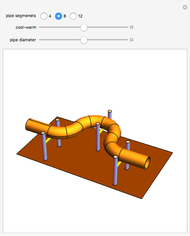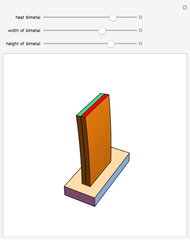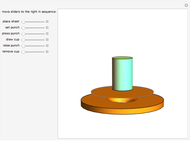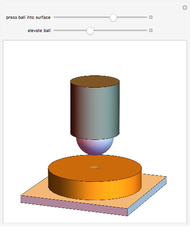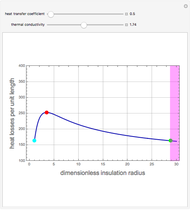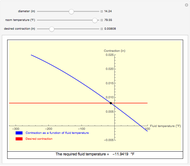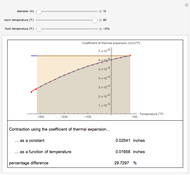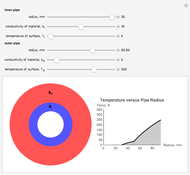Cauchy and Engineering Strain Deformation in 3D

Requires a Wolfram Notebook System
Interact on desktop, mobile and cloud with the free Wolfram Player or other Wolfram Language products.
Given a unit volume of an isotropic material represented by a 3D cube, applying normal and shear stresses leads to the strain deformation of both Cauchy and engineering shear strain types. The stress and strain tensor is updated dynamically with the stress levels, and as you vary the material's modulus of elasticity  and the Poisson ratio. The units for stress are in MPa (megapascals) and the unit for
and the Poisson ratio. The units for stress are in MPa (megapascals) and the unit for  is in GPa (gigapascals). Shear strain values in the strain tensor are converted from radians to degrees for convenience. Direct strain is given as a percentage.
is in GPa (gigapascals). Shear strain values in the strain tensor are converted from radians to degrees for convenience. Direct strain is given as a percentage.
Contributed by: Nasser M. Abbasi (September 2013)
Open content licensed under CC BY-NC-SA
Snapshots
Details
References
[1] A. C. Ugural and S. K. Fenster, Advanced Strength and Applied Elasticity, New York: Elsevier, 1987.
[2] Efunda. "Infinitesimal 1D Strain." (Sept 9, 2013) www.efunda.com/formulae/solid_mechanics/mat_mechanics/strain.cfm.
[3] Wikipedia. "Infinitesimal Strain Theory." (Jul 25, 2013) en.wikipedia.org/wiki/Infinitesimal_strain_theory.
Permanent Citation
"Cauchy and Engineering Strain Deformation in 3D"
http://demonstrations.wolfram.com/CauchyAndEngineeringStrainDeformationIn3D/
Wolfram Demonstrations Project
Published: September 11 2013







